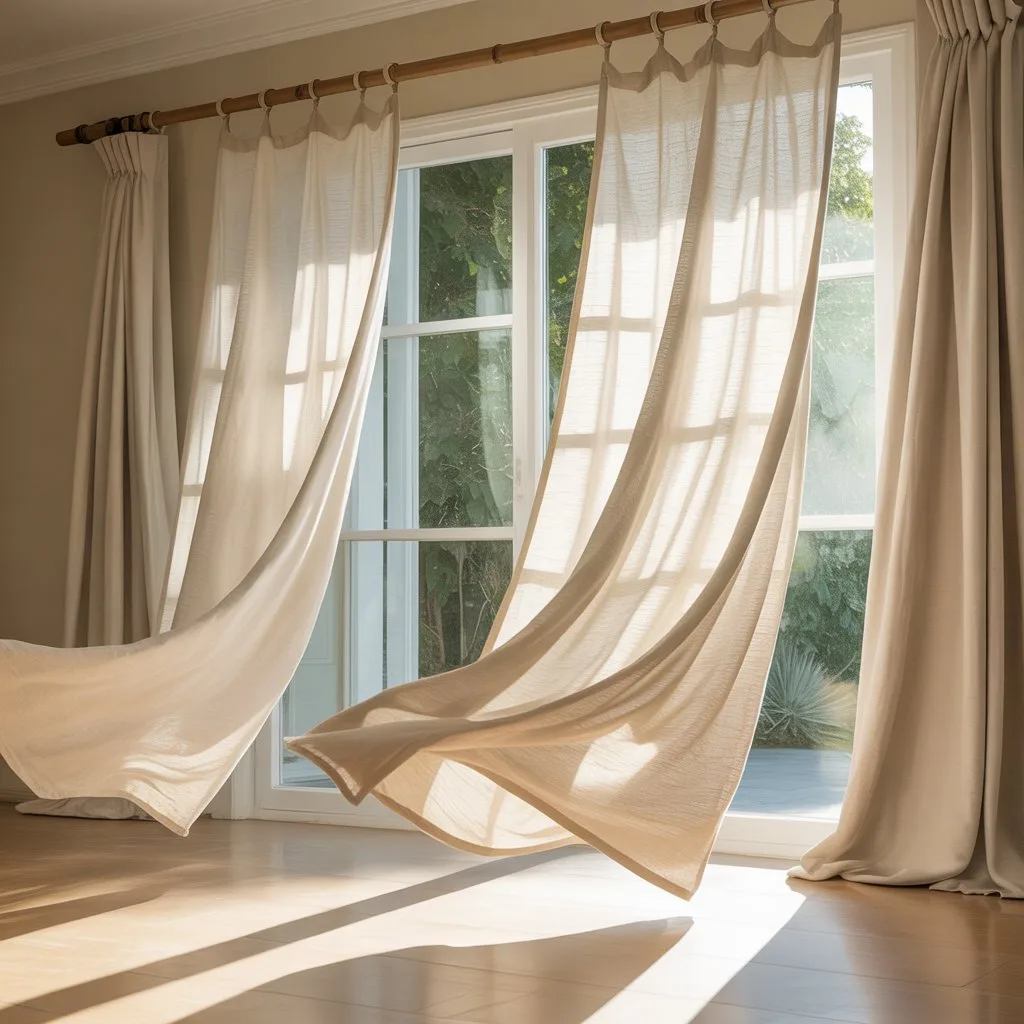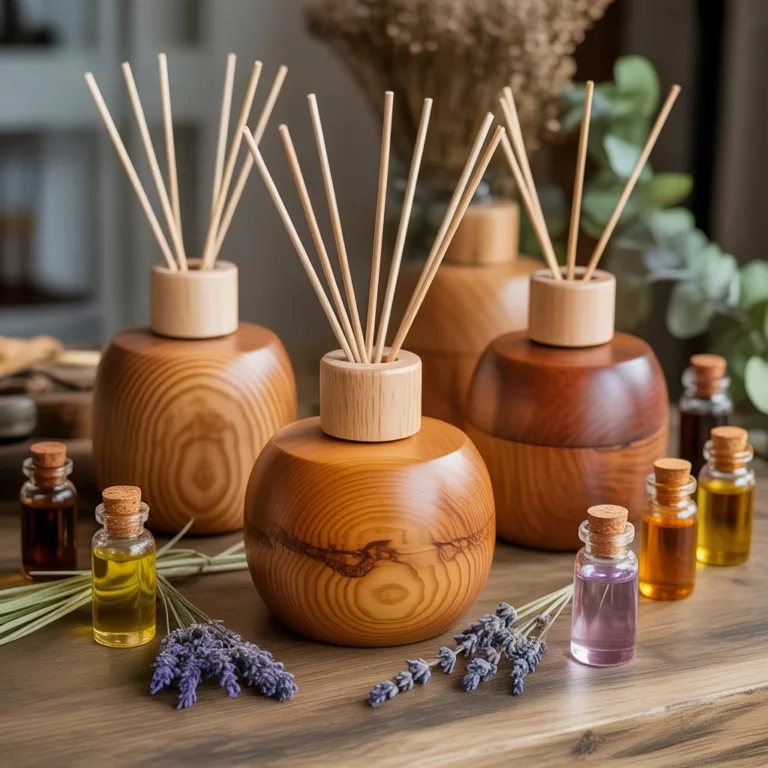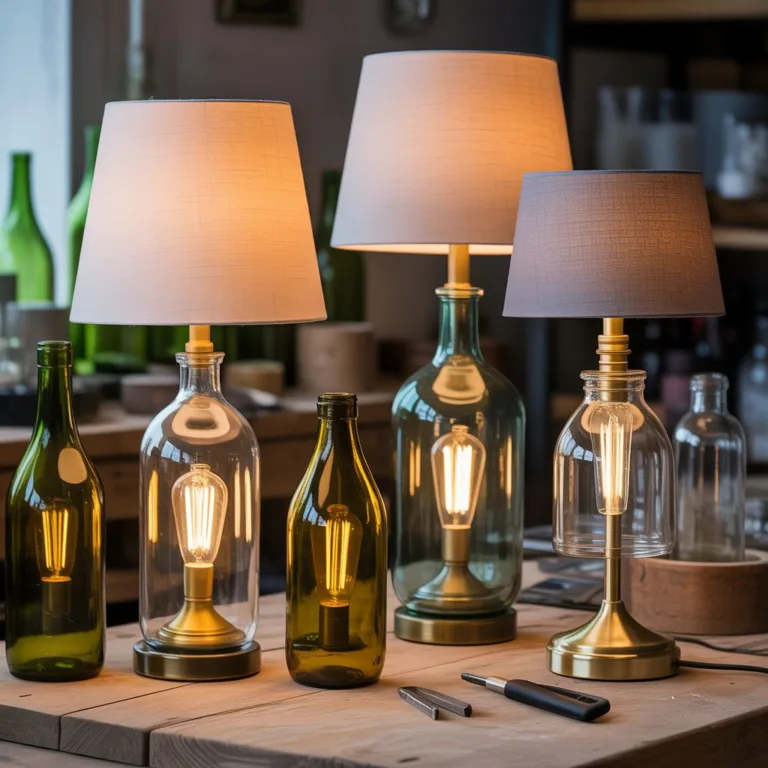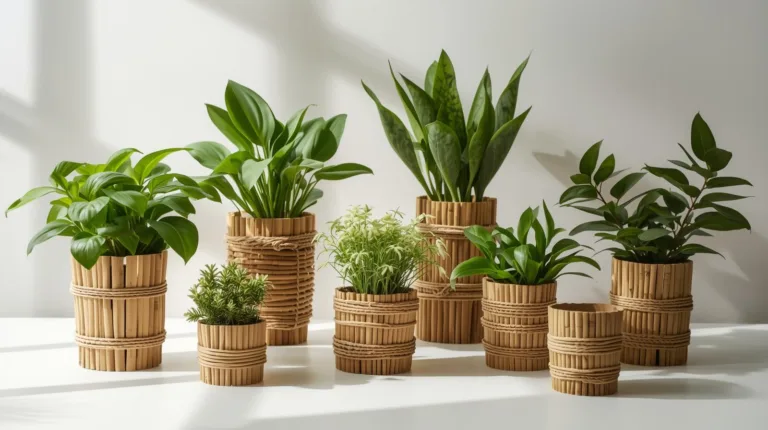Decorating with natural curtains made from organic fabrics and bamboo rods is an elegant and sustainable way to bring warmth and eco-conscious design into any home. Combining organic materials with timeless simplicity, this project not only enhances interior spaces but also supports environmentally responsible choices. By using natural fibers and renewable bamboo, you can create curtains that are stylish, healthy, and uniquely personal.

Why Choose Natural Curtains
Natural curtains go beyond aesthetics. They help reduce indoor toxins, improve air quality, and contribute to a more sustainable lifestyle. Unlike synthetic fabrics that can release microplastics and volatile compounds, organic fabrics are free from harmful chemicals and dyes.
Bamboo rods complement these fabrics perfectly. Bamboo grows rapidly, requires minimal water, and doesn’t need chemical fertilizers — making it one of the most eco-friendly materials for home décor. Together, organic textiles and bamboo create a harmonious combination of beauty and environmental mindfulness.
This approach to home decorating is ideal for anyone who wants to make small but meaningful changes toward a greener lifestyle without compromising comfort or style.
Choosing the Right Organic Fabrics
Selecting the right fabric is essential for achieving the look and function you want. Organic fabrics come in various textures, weights, and natural tones, giving you flexibility for different room types and lighting needs.
Here are some excellent options for natural curtains:
- Organic Cotton: Soft, breathable, and versatile, cotton works well in bedrooms and living rooms. Look for Global Organic Textile Standard (GOTS)-certified cotton for guaranteed sustainability.
- Linen: Made from flax plants, linen offers a rustic charm with natural wrinkles and excellent breathability. It filters sunlight gently, giving rooms a relaxed, airy feel.
- Hemp: Known for its strength and durability, hemp fabric provides a slightly textured surface that adds depth and interest to minimalist interiors.
- Bamboo Fabric: If you prefer a cohesive theme, bamboo fabric itself can be a great option. It’s smooth, silky, and resistant to moisture.
When choosing colors, consider natural tones such as cream, beige, sand, or soft greens. These shades not only reflect nature but also complement bamboo’s warm golden hues.
Preparing the Bamboo Rods
Bamboo rods are lightweight yet sturdy, making them ideal for curtain hardware. You can buy pre-cut rods or source raw bamboo poles to customize the length yourself.
Before using raw bamboo, clean it thoroughly and remove any dust or residue. Allow it to dry completely to prevent warping. For a more polished appearance, lightly sand the surface and apply a coat of natural oil, beeswax, or eco-friendly varnish. This enhances the bamboo’s natural color while protecting it from humidity and insects.
If you prefer a rustic look, leave the bamboo untreated for a raw, organic finish. Pairing untreated bamboo with loosely woven fabrics can create a soft, bohemian aesthetic that feels close to nature.
Designing and Measuring Your Curtains
Proper measurement ensures your natural curtains hang gracefully and function effectively. Measure the window width and add about 20–30% extra fabric to allow for gentle folds when the curtains are closed.
For height, decide whether you want the curtains to fall just below the window frame or extend to the floor for a more dramatic effect. Floor-length curtains made from organic fabrics tend to create a serene, flowing atmosphere.
When attaching the bamboo rods, make sure they’re positioned at least 10–15 centimeters above the window frame to elongate the visual height of the room.
If you’re crafting your own curtain panels, double-fold the top edge of the fabric to create a rod pocket or attach loops made from leftover scraps for a more decorative touch.
DIY Assembly and Hanging
Making and assembling your natural curtains can be a simple and rewarding project. Once your fabric panels are hemmed and prepared, slide the bamboo rod through the pocket or loops. You can secure the rod using natural rope, hemp twine, or eco-friendly brackets made from reclaimed wood or metal.
Ensure the bamboo rod is properly supported at both ends to prevent bending, especially for wider windows. For an organic touch, tie decorative knots or wrap jute cord around the rod ends to add character and texture.
This approach blends function and artistry — turning a simple home accessory into a statement of sustainability and creativity.
Maintenance and Longevity
Natural curtains require gentle care to preserve their texture and color. Wash them with mild, biodegradable detergent and avoid harsh chemicals or bleach. Air-drying is best, as it prevents shrinkage and maintains the fabric’s integrity.
Occasionally wipe down the bamboo rods with a soft, damp cloth and reapply oil if they start to lose their natural sheen. Because bamboo is moisture-resistant, it holds up well in most environments, though it’s best to avoid excessive humidity for long periods.
By maintaining your natural curtains properly, they can last for many years while retaining their eco-friendly appeal.
Creative Touches and Design Ideas
Personalization makes your natural curtains stand out. You can dye organic fabrics using natural pigments from plants like turmeric, beetroot, or coffee for subtle, earthy tones.
Adding small decorative elements such as hand-stitched borders, wooden beads, or macramé tiebacks enhances their handmade charm. Combining different textures — like pairing linen with hemp or bamboo with cotton — creates layers of visual interest while keeping the theme natural and cohesive.
If you want a softer diffusion of light, consider double-layering sheer organic cotton with a thicker hemp fabric. This allows flexibility in controlling privacy and brightness throughout the day.
Sustainable Living Through Creative Design
Making natural curtains using organic fabrics and bamboo rods is more than a design choice — it’s a commitment to living consciously. It encourages mindful consumption, supports eco-friendly industries, and reduces waste associated with synthetic décor materials.
These curtains not only enhance your living space but also reflect values of care, craftsmanship, and sustainability. They remind us that comfort and environmental responsibility can coexist beautifully within our homes.
Whether you’re redesigning a room or simply adding a natural accent, crafting your own bamboo and organic fabric curtains brings a sense of accomplishment and harmony. Each time sunlight filters through your eco-friendly curtains, it’s a quiet celebration of creativity, nature, and responsible living.

Lucas Hartman is a DIY enthusiast and sustainability advocate focused on natural crafts and eco-friendly home décor. With a background in arts and design, Lucas creates tutorials that help families and hobbyists transform everyday recycled or organic materials into beautiful, functional projects.



